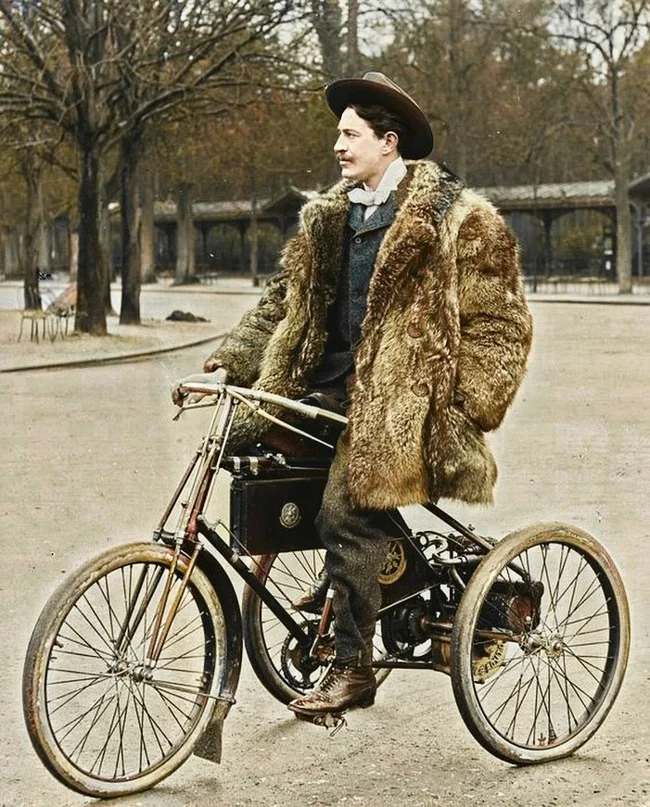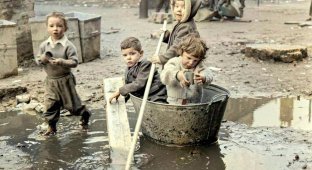Unique shots from the life of European countries that will take you back in time (21 photos)
All the photographs were coloured and convey well the way of life and everyday life of people a hundred years ago. 
Girls from a Dutch village dancing in a circle, early 20th century.
At the beginning of the 20th century, French photographer Charles Chusseau-Flavien began collecting the works of 160 photographers from all over the world. He distributed the photographs in popular illustrated magazines of the time and became one of the world's first photo press agencies. In the picture we see the Dutch Dance - 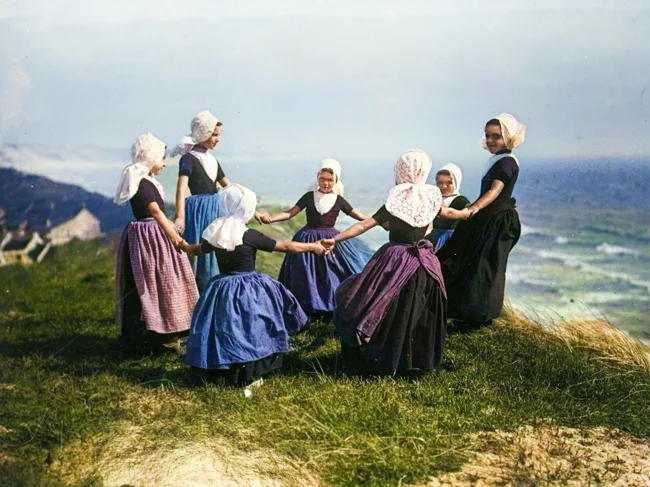
Fisherman at home. East Anglia, 1887.
This photograph is from the book: "Pictures of Life in Field and on the Marshes". Photographer Peter Henry Emerson captured and recorded everyday life and scenes from rural life in East Anglia.
The photograph shows a fisherman polishing his telescope and chewing the stem of a clay pipe in the cobbled courtyard of a fisherman's cottage. 
A public urinal on the street in Paris, 1895.
There were no street toilets for girls, which is not surprising given the women's clothing of the time. 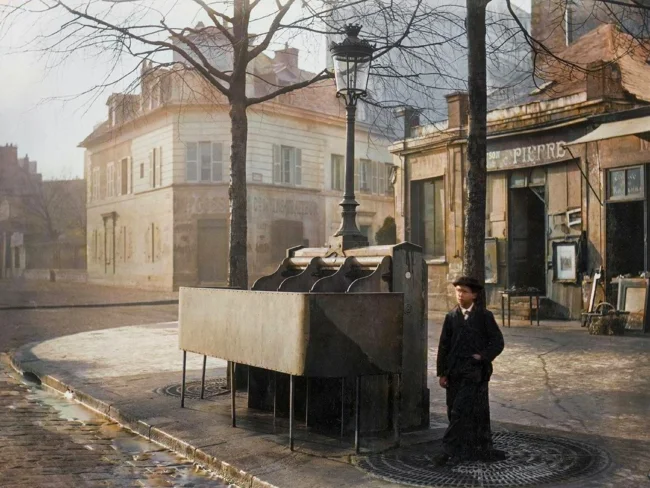
A colorful Norwegian pilot with a Christmas tree. Norway, 1909. 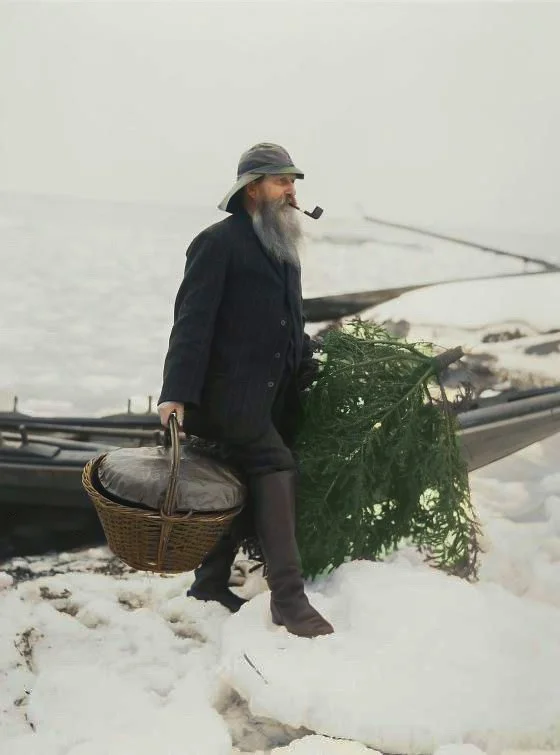
On the streets of Paris during the flood, 1910.
The Great Flood was a disaster for the city, as a result of which the Seine River flooded Paris. The water level in the Seine rose eight meters above normal. 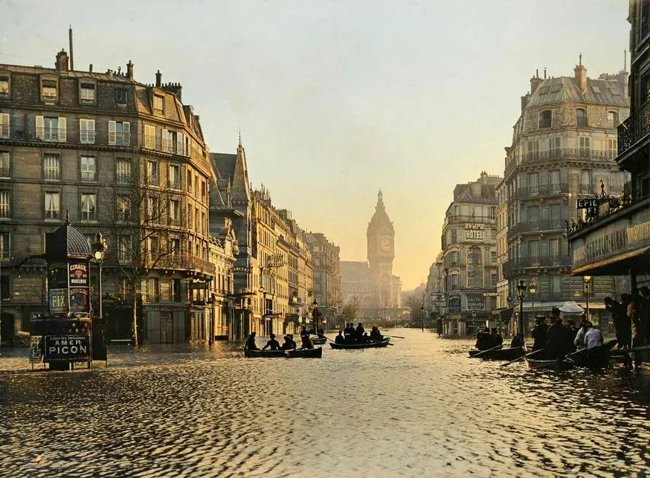
The carriage of Queen Maria Pia of Portugal, 1880s.
It looks like a carriage from a fairy tale or three carriages were connected and put on rails.
Three-axle carriages were built throughout the second half of the 19th century. The reason: the track bed was flimsy, and the large weight of the trains caused accidents - the rails would come apart. The solution was to either build 2-axle carriages (heated carriages) or put a third pair of wheels in the middle of long carriages.
The disadvantages of three-axle carriages were the strong clatter of wheels at the joints and poor handling of such carriages on turns.
As a result, after the thickness of standard rails increased sufficiently, and the fastenings to the sleepers became more powerful, almost all countries immediately abandoned the practice of building such "magic carriages".
It seems that the conservative English churned them out in small quantities until the 1940s, but they stopped too. 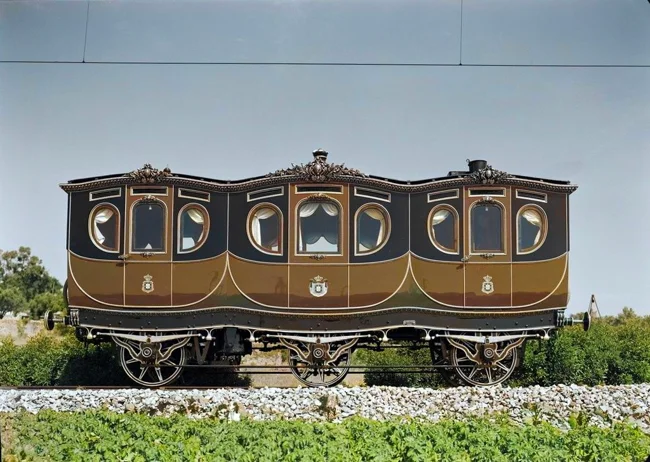
A simulator for navigators on the roof of the Royal College of Science and Technology. Glasgow, 1913. 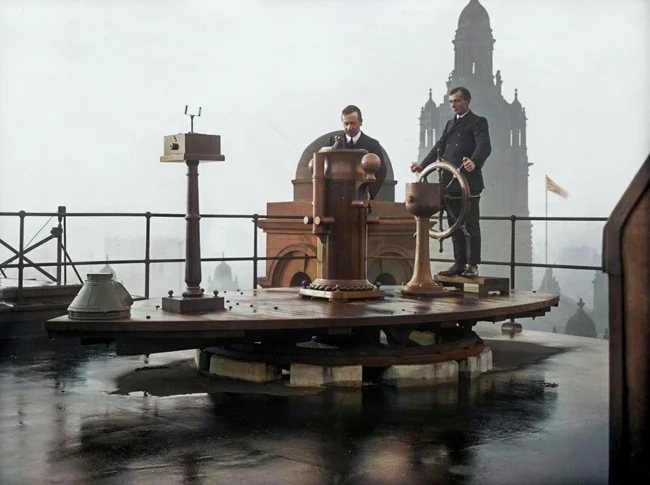
Three men on different types of bicycles. Kingdom of Norway, 1890s.
The 1890s saw one of the biggest bicycle crazes, which later became known as the Bicycle Boom. 
Dog cart, Netherlands, 1906.
In Europe, dogs often replaced horses in cities. They pulled carts no worse than horses, and were easier to maintain. 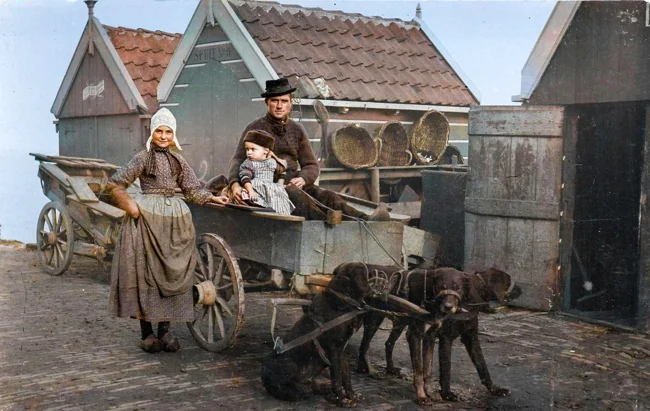
Women sorting herring, Norway, 1900s.
Norway is a country of fishermen that has transformed itself into one of the most prosperous countries in the world in the space of a century. 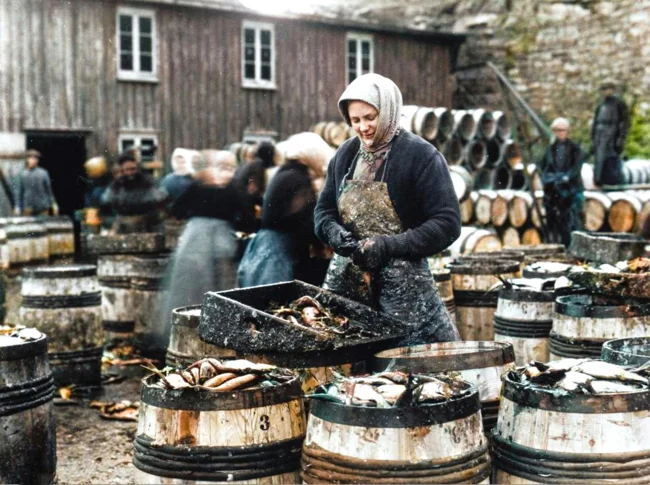
Laundry in Nice, France, 1908.
Laundry at the turn of the century was a very different activity than it is today. Back in the early 1900s, when technology was still in its infancy, people had to wash their clothes in rivers. Piped water and the first washing machines would not appear for another couple of decades. 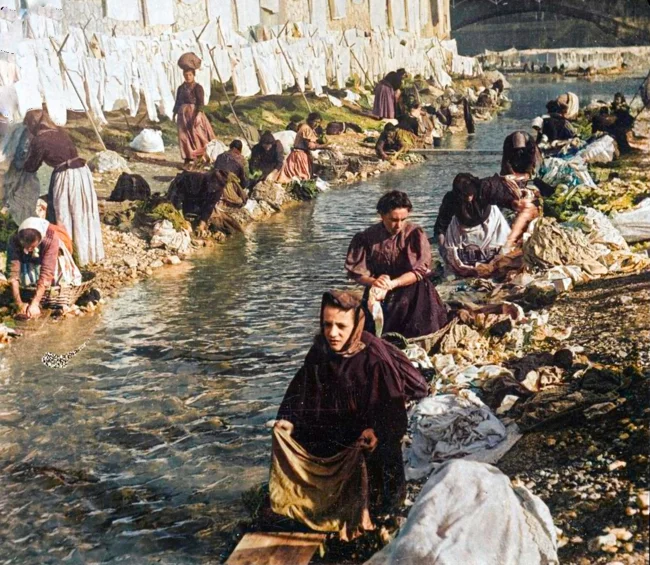
Lacemakers in Brittany, France, 1920.
The interestingly shaped headdresses worn by two women on either side are called Bigouden. Bigouden is a traditional women's headdress in the area of the same name in the southwest region of Brittany in France. 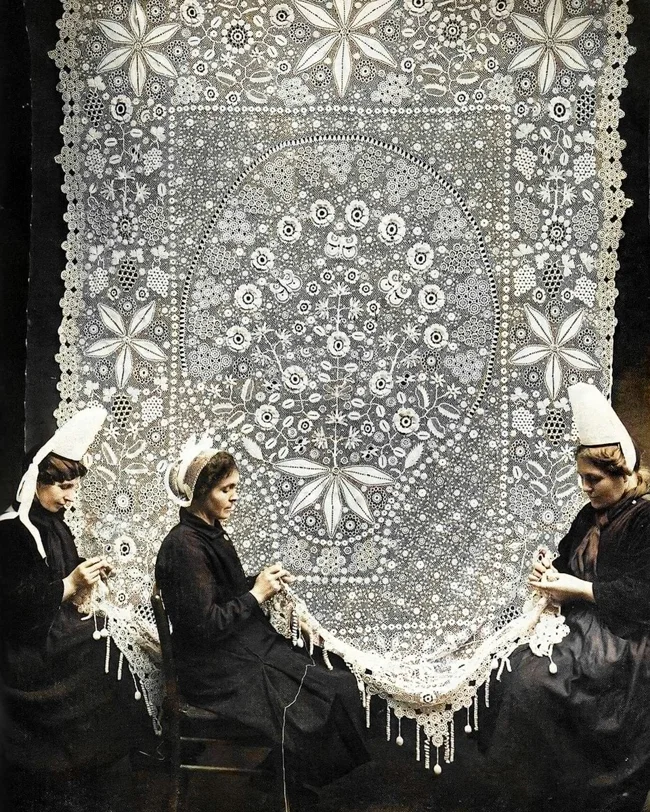
Clapham, UK, 1877.
A street photographer takes pictures of an aristocratic family in a park, as photography was very expensive at the time. 
A Parisian woman poses on a balcony, early 1900s. 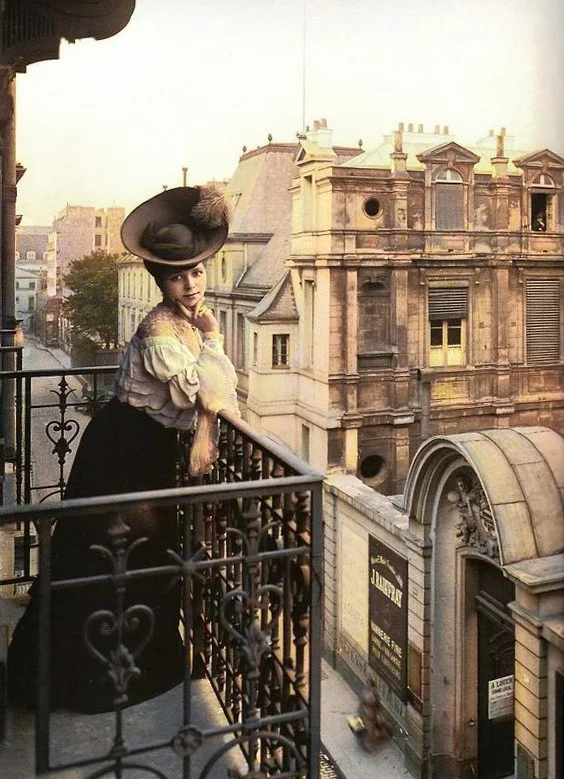
Two-time Nobel Prize winner Marie Curie in her laboratory in Paris, France, 1911.
Curie and her husband, Pierre Curie, discovered the radioactive elements Polonium and Radium in 1898.
This groundbreaking discovery revolutionized the understanding of matter and led to the development of X-ray technology. 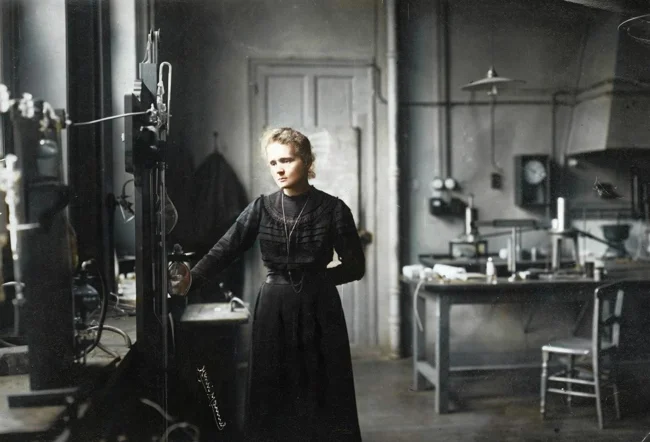
Women's fistfight, Great Britain, 1900s.
Women's boxing was even included in the Olympic demonstration program in 1904, but it did not become popular until the 1990s. 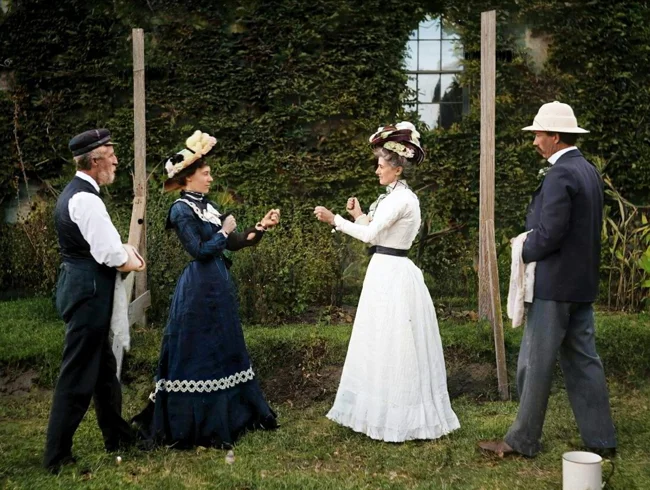
Gustave Eiffel (left) and a friend inspect the newly built Eiffel Tower. Paris, 1889.
The frame of the spiral staircase did not survive, it was cut into sections. Some of them went to museums, one part remained on the tower, and others were auctioned off. Parts of the staircase once connected the second and third levels of the tower. 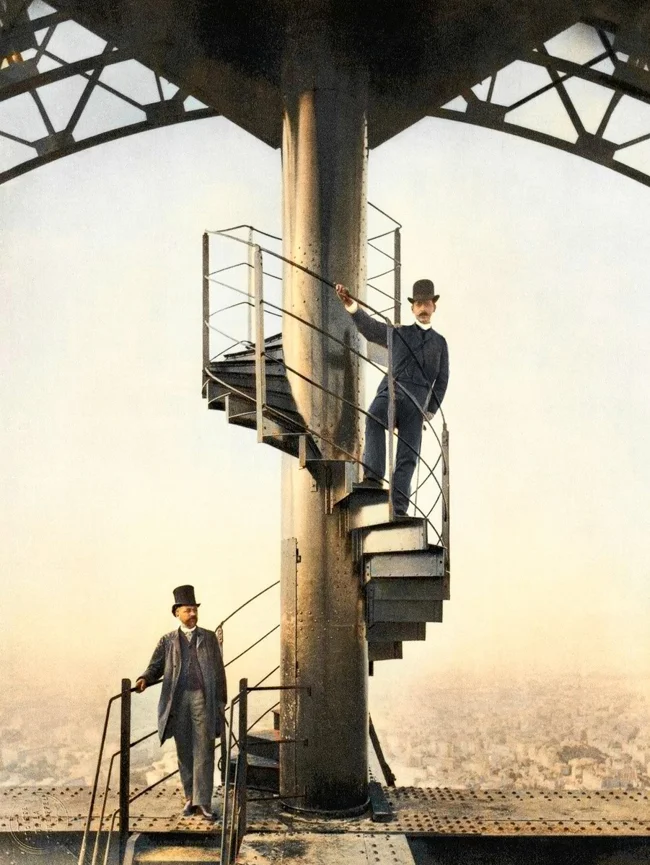
At the hairdresser's. France, 1920s.
In the picture, hairdresser M. Marcel, creator of the Marcel hairstyle, demonstrates his creation on a female model. 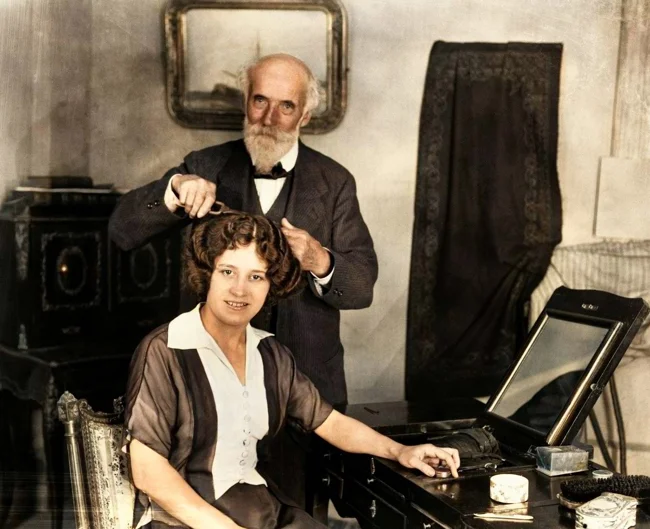
Sailors of the French armored cruiser "Admiral Aube" at work, 1917. 
Portrait of Henri Fournier, a French racing driver, taken around 1898.
Fournier began his career on motorcycles and tricycles. In 1901, he joined the Mors Racing team and became the most successful driver of that year, winning both the Paris-Bordeaux and Paris-Berlin races. 